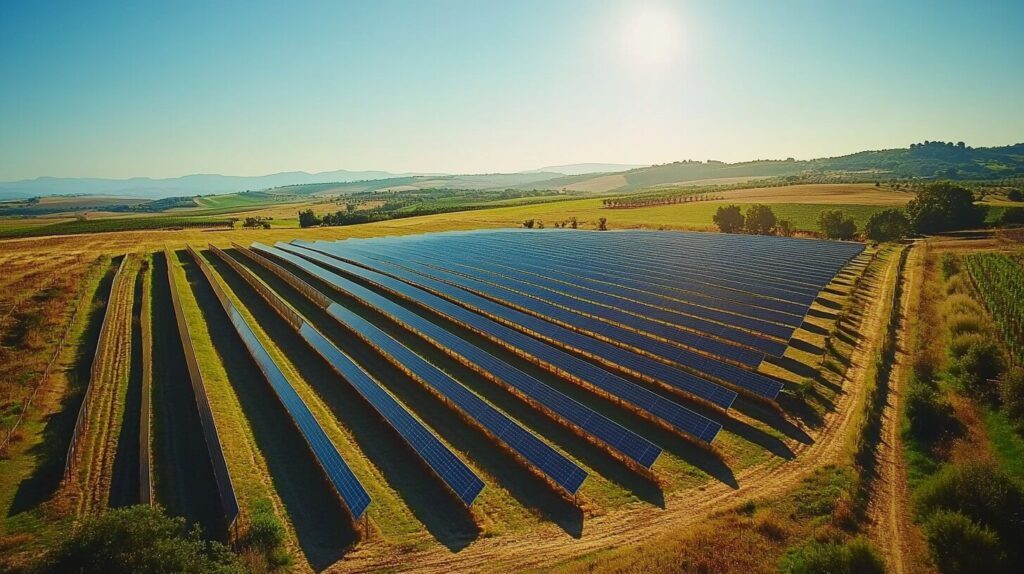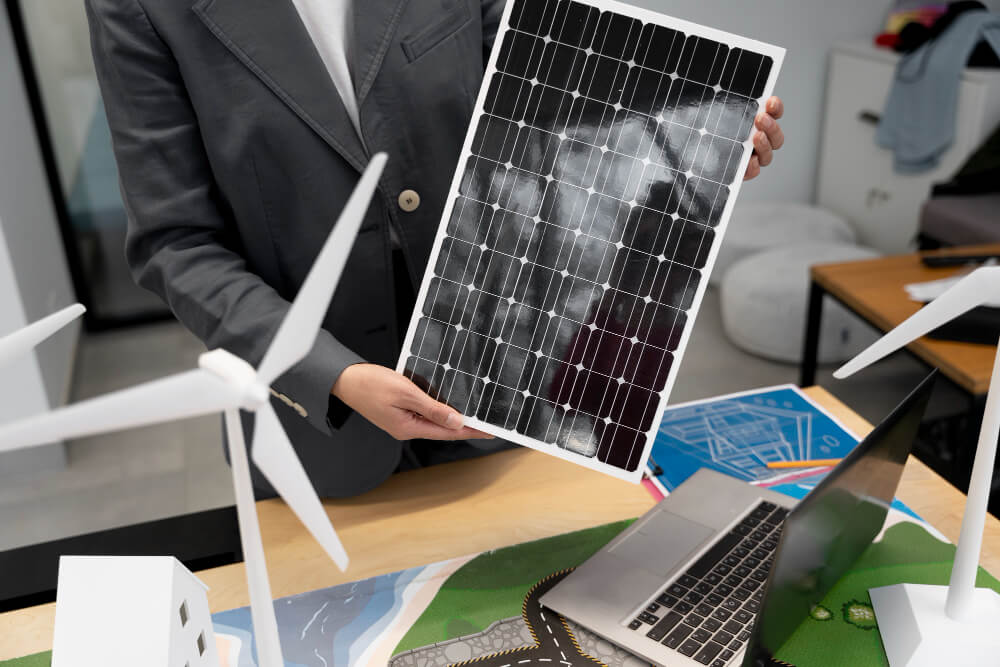In many remote villages around the world, nightfall means darkness. Without reliable electricity, families rely on expensive, dangerous kerosene lamps or simply end their days when the sun sets.
But solar bulbs are changing this reality, bringing affordable, sustainable light to rural communities.
This transformative technology represents one of the most accessible entry points to modern energy services for the 940 million people worldwide still living without electricity.

The Global Energy Divide
Before diving into solar bulb innovations, it’s important to understand the context of global energy access. While the latest innovations in solar bulbs continue to advance rapidly, nearly 940 million people worldwide still live without electricity, primarily in rural and developing regions.
Despite significant progress in recent decades, energy poverty remains a stubborn challenge:
- Over 13% of the world’s population lacks access to electricity
- In sub-Saharan Africa, this figure rises to nearly 60% in rural areas
- Even communities with grid connections face frequent blackouts and unreliable service
- Energy poverty disproportionately affects women and children
- Lack of electricity limits educational opportunities, healthcare quality, and economic development
Rural communities face particularly steep challenges. The remoteness of villages, difficult terrain, and scattered population density make traditional grid extension prohibitively expensive.
Even when governments invest in rural electrification, progress often moves slowly. Solar bulbs offer an immediate solution that can bridge this gap while larger energy infrastructure develops.
Why Solar Bulbs Matter for Rural Communities
Rural electrification faces unique challenges:
- Remote locations far from power grids
- Limited infrastructure for traditional electricity
- Low household incomes making expensive solutions impractical
- Need for durable, low-maintenance technology
- Harsh environmental conditions requiring robust design
- Limited technical expertise for repairs and maintenance
Solar bulbs address these challenges head-on by converting abundant sunlight into free, clean lighting.
Unlike large infrastructure projects that can take years to implement, solar bulbs provide immediate benefits at the household level.
They represent a decentralized approach to energy access that puts power—literally and figuratively—in people’s hands.
Economic Benefits
The economic case for solar bulbs is compelling:
- Reduced household expenses: Families typically spend $3-10 per month on kerosene, candles, and disposable batteries. Solar bulbs eliminate these recurring costs after the initial investment.
- Productive hours extension: With reliable lighting, productive work and income-generating activities can continue after sunset.
- Micro-enterprise enablement: Small businesses can extend operating hours and offer new services like phone charging.
- Job creation: Local sales, distribution, and maintenance of solar lighting creates employment opportunities.
Research by the World Bank found that households with basic solar lighting save an average of $70-$100 per year on energy expenditures—significant savings for families living on less than $2 per day.
Health Improvements
The health benefits of replacing traditional lighting with solar alternatives are substantial:
- Reduced indoor air pollution: Kerosene lamps emit black carbon and other particulates linked to respiratory diseases. The WHO estimates that 4.3 million people die prematurely each year from illnesses attributable to household air pollution.
- Fire hazard elimination: Kerosene lamps and candles cause thousands of house fires and burns annually, particularly affecting children.
- Decreased eye strain: LED solar lights provide cleaner, brighter illumination than flickering flames, reducing vision problems.
- Reduced toxic exposure: Families avoid accidental kerosene ingestion, a common cause of poisoning in young children.
A study in Kenya found a 50% reduction in reported respiratory symptoms in households that switched from kerosene to solar lighting.
Environmental Impact
Solar bulbs deliver significant environmental benefits:
- Carbon emissions reduction: A single kerosene lamp can emit up to 100kg of CO2 per year.
- Deforestation prevention: In areas where wood is used for lighting, solar alternatives reduce pressure on local forests.
- Battery waste reduction: Rechargeable solar lights produce less waste than disposable battery-powered alternatives.
- Resource conservation: Solar technology harnesses renewable energy instead of depleting fossil fuels.
The Climate Group estimates that replacing all kerosene lamps worldwide with solar alternatives would prevent 30 million tons of carbon dioxide emissions annually—equivalent to taking 6.3 million cars off the road.
Types of Solar Bulbs Transforming Rural Life
The solar lighting market has evolved rapidly, offering a range of solutions to meet diverse needs and budgets.
Basic Solar Lanterns
These entry-level solar lights typically include a small solar panel, battery, and LED light in a portable package.
They provide 4-8 hours of light after a full day’s charge and cost between $5-15.
Key features often include:
- Integrated solar panels (typically 0.5-2 watts)
- Lithium-ion or lithium-iron-phosphate batteries
- Single or multiple brightness settings
- Hanging hooks or stands for flexible positioning
- Indicators showing battery or charge status
Basic lanterns serve as direct replacements for kerosene lamps, providing clean, bright light for essential activities like cooking, eating, and basic household tasks.
Their portability makes them versatile for both indoor and outdoor use.
Mid-Range Multi-Function Solar Lights
These more advanced lights typically cost $15-40 and offer additional features:
- Multiple lighting points or bulbs
- Phone charging capability via USB ports
- Adjustable brightness levels
- Extended battery capacity (10-24 hours of light)
- Higher lumen output for brighter illumination
- SOS or emergency flashing modes
- Weather resistance for outdoor durability
These systems suit families needing lighting for multiple rooms or activities, and the phone charging capability addresses another critical need in rural communities where mobile phones serve as essential communication tools.
Solar Home Systems (SHS)
More comprehensive than simple lanterns, these systems include multiple lights, phone charging capabilities, and sometimes small appliance power.
A typical SHS costs $50-150 but can transform family life.
Components usually include:
- Larger solar panels (5-20 watts)
- Central control unit with battery
- 2-4 fixed or portable light points
- Multiple USB charging ports
- Some systems include radios, fans, or TV capability
- Advanced models feature remote monitoring and pay-as-you-go technology
These systems represent a significant step up the energy ladder, providing not just lighting but also access to information and entertainment.
Modern SHS often incorporate mobile payment technologies and remote monitoring, allowing for innovative financing models like pay-as-you-go that make them accessible to lower-income households.
DIY Solar Bottle Bulbs
One of the most innovative and affordable solutions is the solar bottle bulb – created from recycled plastic bottles, water, and a small amount of bleach.
These “Moser lamps” (named after Brazilian inventor Alfredo Moser) cost less than $2 to make and provide daytime lighting equivalent to a 40-60 watt bulb without any electricity.
The construction process is remarkably simple:
- Fill a clean plastic bottle with filtered water
- Add a small amount of bleach to prevent algae growth
- Seal the bottle tightly
- Install the bottle through a hole in the roof, with part exposed to sunlight
- Seal around the bottle to prevent leaks
The water in the bottle refracts sunlight, spreading it throughout the room during daylight hours.
While these bulbs don’t provide nighttime lighting, they offer free illumination during the day, particularly valuable in homes with metal roofs or few windows.
Hybrid and Specialized Systems
The market continues to evolve with specialized solutions such as:
- Solar task lights: Designed for specific activities like reading or sewing
- Solar street lights: Community-level lighting for public spaces and pathways
- Solar-powered educational lamps: Specifically designed for students with features like book stands and focused beams
- Solar + human power hybrids: Systems incorporating hand cranks or pedals for charging during extended cloudy periods
- Solar + grid hybrids: Systems that can charge from both solar panels and grid electricity when available
These specialized solutions address particular needs and contexts, recognizing that rural communities have diverse requirements.
Technology Behind the Light
Understanding the core technologies helps explain why today’s solar bulbs outperform earlier generations.
Photovoltaic Technology
The heart of any solar bulb is its photovoltaic (PV) panel, which converts sunlight into electricity.
Recent advances include:
- Increased efficiency: Modern panels convert 18-22% of sunlight into electricity, up from 8-12% in early models
- Flexible and portable designs: Thin-film technology allows for rollable or foldable panels
- Integrated panels: Many smaller lights now incorporate panels directly into the device housing
- Durability improvements: Tempered glass and protective coatings extend panel life even in harsh conditions
- Cost reduction: PV costs have fallen by over 80% in the past decade, making panels much more affordable
These advances mean today’s solar bulbs can generate more power from smaller panels, reducing both cost and size.

Battery Technology
Battery improvements have dramatically enhanced solar bulb performance:
- Lithium-ion dominance: Most quality solar lights now use lithium-ion or lithium-iron-phosphate batteries, offering longer life and better performance than older nickel-cadmium options
- Increased cycles: Modern batteries can withstand 1,000-2,000 charge cycles, up from 300-500 in previous generations
- Improved depth of discharge: Newer batteries perform better when deeply discharged
- Better temperature tolerance: Enhanced chemistry allows operation in wider temperature ranges
- Battery management systems: Intelligent charging and discharging extends battery life and performance
Battery improvements translate directly to longer run times and product lifespans, addressing a major limitation of early solar lighting products.
LED Lighting
LED technology has revolutionized the efficiency and quality of solar lighting:
- Efficiency gains: Today’s LEDs produce 100-200 lumens per watt, allowing bright light from minimal power
- Longevity: Quality LEDs last 50,000+ hours, essentially eliminating bulb replacement
- Color options: Warm white LEDs (2700-3000K) provide comfortable light similar to incandescent bulbs
- Directional control: Optics and lenses direct light precisely where needed, maximizing perceived brightness
- Dimming capability: Advanced LEDs can be dimmed to extend battery life when full brightness isn’t needed
LED advancements mean today’s solar bulbs produce more and better quality light while consuming less power, a critical factor for battery-operated systems.
Real Impact: Success Stories
The transformative potential of solar bulbs becomes clear through real-world examples.
Liter of Light: Philippines and Beyond
In the Philippines, the Liter of Light project has installed over 350,000 bottle bulbs, bringing daytime lighting to thousands of homes.
As one recipient explained, “Before, my children couldn’t study during the day because our home was too dark. Now they can read anytime.”
The project began with simple daytime bottle bulbs but has expanded to include night lighting by adding small circuits, LEDs, and mini solar panels to the bottle design.
This evolution has created a 24-hour lighting solution costing less than $10.
The initiative has spread to over 15 countries across Asia, Africa, and South America, with local volunteers trained to install and maintain the systems.
The project demonstrates how simple technology, properly implemented, can achieve massive scale.
M-KOPA: Pay-As-You-Go Revolution in East Africa
M-KOPA pioneered an innovative financing model in Kenya, Uganda, and Tanzania that has connected over 750,000 homes to solar power.
Their entry-level solar lighting kit includes two bulbs, phone charging, and a radio.
The company uses mobile money platforms to enable pay-as-you-go financing. Customers make a small down payment (about $35) and then daily payments of approximately $0.50 via mobile money for one year.
After completing payments, customers own their systems outright.
This approach makes quality solar lighting accessible to low-income households that couldn’t afford the upfront cost.
The daily payment is typically less than what families were spending on kerosene and phone charging, making it immediately economical.
Solar Sister: Women-Centered Distribution
Solar Sister, operating in Tanzania, Nigeria, and Uganda, has built a network of over 5,000 women entrepreneurs who sell solar lights and clean cookstoves in their communities.
This model addresses both energy poverty and economic opportunity for women.
The entrepreneurs receive training, marketing support, and inventory on consignment.
They earn commissions on sales, generating income while bringing clean energy solutions to their communities.
This model has proven particularly effective at reaching the “last mile” – remote communities often overlooked by traditional distribution channels.
By embedding sales in existing social networks, Solar Sister achieves higher adoption rates and better after-sales support than many alternatives.
Educational Impact in Rural Schools
In Kenya, solar lanterns have helped students improve their grades by extending study hours.
Teachers report attendance increases of 15% in schools using solar lighting.
The Enlighten initiative in Zimbabwe equipped rural schools with solar lighting systems, allowing evening classes and study sessions.
Schools reported a 20% improvement in examination pass rates after implementing reliable lighting.
In India, the SoULS (Solar Urja through Localization for Sustainability) program distributed over 70,000 solar study lamps to students in Maharashtra state.
Follow-up studies showed students with solar lamps studied an average of one hour longer each day and showed improved academic performance.
Overcoming Common Challenges
While solar bulbs offer tremendous benefits, several challenges have affected their adoption and impact.
Understanding these challenges—and how they’re being addressed—is crucial for successful implementation.
Battery Degradation
Early solar bulbs often failed when batteries wore out.
Today’s models use replaceable lithium-ion batteries with 2-5 year lifespans.
Additional improvements include:
- Modular design: Many newer systems allow battery replacement without special tools
- Battery management systems: Smart charging algorithms prevent overcharging and deep discharging
- Temperature management: Improved casing designs protect batteries from extreme heat
- Quality standards: Industry certifications like Lighting Global set minimum battery performance requirements
These advances have significantly extended product lifespans, improving both economic value and environmental sustainability.
Durability Concerns
Modern solar bulbs are built for harsh conditions with water-resistant casings, durable plastics, and shock-resistant components.
Design improvements include:
- IP-rated enclosures: Protection against dust and water ingress
- Impact-resistant materials: Polycarbonate and other tough plastics withstand drops and rough handling
- Strain relief: Reinforced connections prevent cable failures
- UV-resistant materials: Prevent degradation from sun exposure
- Corrosion resistance: Sealed electronics and protective coatings prevent humidity damage
These engineering advances have extended typical product lifespans from 1-2 years to 3-5 years or more, dramatically improving value proposition.
Last-Mile Distribution
Getting products to remote rural areas remains challenging due to poor infrastructure, high transportation costs, and limited retail networks.
Innovative distribution models include:
- Village entrepreneur networks: Training local sales agents who earn commissions
- Microfranchising: Providing business packages to rural entrepreneurs
- Existing channel partnerships: Working through agricultural suppliers, mobile money agents, and other existing networks
- Public-private partnerships: Collaborating with government extension services and NGOs
- Digital platforms: Using mobile phones to connect buyers with products and services
These approaches are overcoming traditional barriers to rural market development, making solar bulbs available even in remote communities.
Maintenance and Repair
Lack of technical support has limited the longevity of many solar lighting initiatives. This challenge is being addressed through:
- Simplified designs: Products engineered for easy maintenance with minimal tools
- Modular components: Allowing replacement of individual parts rather than entire units
- Local technician training: Building repair capacity within communities
- Remote diagnostics: Some advanced systems include self-diagnostic features
- Standardized parts: Industry collaboration on common components
Building local repair ecosystems ensures long-term sustainability beyond initial product deployment.
Financing Models Making Solar Bulbs Accessible
Innovative financing has been crucial to expanding solar bulb access.
Key models include:
Pay-As-You-Go (PAYG)
PAYG technology uses mobile payments and remote activation to make solar systems affordable through small, regular payments.
Customers make a minimal down payment and then pay daily or weekly fees, often via mobile money.
The system may be remotely disabled if payments stop, creating a lease-to-own model with built-in collateral.
This approach has revolutionized access by aligning payment schedules with household cash flow and eliminating large upfront costs.
Companies like M-KOPA, BBOXX, and d.light have connected millions of households through PAYG financing.
Microfinance Integration
Many microfinance institutions now offer specific loan products for solar lighting.
These typically feature:
- Loan terms matched to expected payback periods (6-12 months)
- Group liability models to reduce risk
- Interest rates lower than for general consumer loans
- Technical support through the lending institution
Linking loan repayments to energy savings makes these products financially sustainable for both lenders and borrowers.
Results-Based Financing
Development agencies and impact investors increasingly use results-based financing to subsidize quality solar products.
Rather than subsidizing upfront costs, these programs pay companies based on verified sales and ongoing functionality, creating incentives for quality and service.
For example, the EnDev program has used this approach across multiple African countries, providing partial subsidies to companies based on the number of verified solar lighting systems sold and maintained in target communities.
Carbon Finance
Some programs leverage carbon credits to subsidize solar lighting.
Replacing kerosene lamps with solar alternatives reduces greenhouse gas emissions, generating carbon credits that can be sold on voluntary or compliance markets.
The social enterprise NOTS, for example, uses carbon finance to reduce the price of solar lamps in Rwanda, making them more affordable for rural households while generating verified carbon reductions.
Corporate Social Responsibility
Many solar lighting projects receive support from corporate social responsibility (CSR) initiatives.
Companies may:
- Donate solar lighting systems to schools or clinics
- Subsidize products for employees and their communities
- Fund distribution in areas where they operate
- Provide technical expertise and logistical support
While pure charity models have limitations, thoughtfully designed CSR initiatives can jumpstart markets and demonstrate value to consumers and governments.
Conclusion
Solar bulbs represent more than just light—they bring education opportunities, health improvements, and economic benefits to communities stepping toward energy independence.
Through continued innovation and thoughtful implementation, these simple technologies are illuminating a brighter future for rural communities worldwide.
The most successful initiatives recognize that technology alone is insufficient. Sustainable impact requires appropriate financing, local capacity building, supportive policies, and business models that align incentives across the value chain.
As costs continue to fall and performance improves, solar bulbs are becoming increasingly accessible to the communities that need them most.
With thoughtful implementation, these humble devices can serve as the first step on a journey from darkness to energy abundance, transforming individual lives and entire communities in the process.



